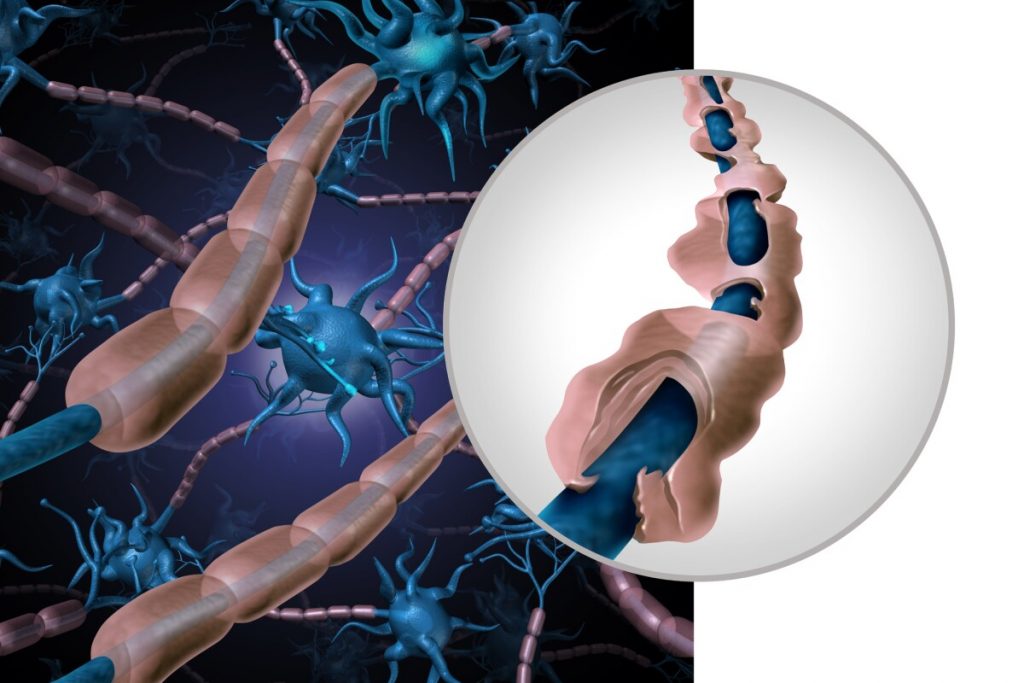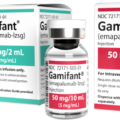Question: Select the statement that correctly describes multiple sclerosis?
A. This fatal disease leads to severe and progressive memory loss.
B. This fatal disease attacks the peripheral nervous system.
C. This nonfatal disease is characterized by severe memory loss.
D. This nonfatal disease disrupts the central nervous system (CNS).
The answer is option D. This nonfatal disease disrupts the central nervous system (CNS).
Explanation: Multiple sclerosis (MS) is a chronic disease affecting the central nervous system (the brain and spinal cord). MS occurs when the immune system attacks nerve fibers and myelin sheathing (a fatty substance that surrounds/insulates healthy nerve fibers) in the brain and spinal cord. This attack causes inflammation, which destroys nerve cell processes and myelin–altering electrical messages in the brain.
MS is unpredictable and affects each patient differently – some individuals may be mildly affected, while others may lose their ability to write, speak or walk. It is not possible to predict how multiple sclerosis (MS) will progress in any individual.
Some people have mild symptoms, such as blurred vision and numbness, and tingling in the limbs. In severe cases, a person may experience paralysis, vision loss, and mobility problems. However, this is not common.
It is difficult to know precisely how many people have MS. According to the National Institute for Neurological Disorders and Stroke (NINDS), 250,000–350,000 people in the United States are living with MS.
The National Multiple Sclerosis Society estimates the number could be closer to 1 million. There are several courses of multiple sclerosis that have been described:
Relapsing-Remitting Multiple Sclerosis (MS)
At the time of diagnosis, 90% of patients will have the relapsing-remitting course of the disease. This form of multiple sclerosis is characterized by the onset of neurological symptoms over a period of hours to days. Common symptoms of a relapse may include:
- Fatigue
- Numbness
- Tingling
- Blurred vision, double vision or loss of vision
- Unsteady gait
- Weakness
These symptoms tend to persist for days or weeks, and then disappear partially or completely on their own or with treatment. Patients may then remain symptom-free for weeks, months or even years (known as remission). Without treatment, most people with MS will develop disease symptoms that will gradually worsen over time (known as relapsing).
Secondary Progressive Multiple Sclerosis (MS)
If the relapsing-remitting condition changes to a point where there are no discernable relapses and remissions; the course of the disease has transitioned to secondary progressive MS. All those with secondary progressive MS began the disease with a relapsing-remitting disease course. In secondary progressive MS, symptoms accumulate and worsen without any remission.
There may be periods where symptoms are stable, but the overall course is one of worsening over time. Often an individual will describe a change in their abilities when comparing current function to past function but without identifying an episode that led to the worsening. Sometimes, after the onset of secondary progressive MS an individual may experience a relapse. The course would then be considered secondary progressive MS with relapses.
Primary Progressive Multiple Sclerosis (MS)
About 10-15% of patients will have gradual worsening from the start of their MS disease. This is referred to as primary progressive MS. People with primary-progressive MS describe a gradual change in mobility; often walking, over time. They often describe heaviness and stiffness in the lower limbs. People with primary-progressive MS almost never have an exacerbation (relapse). If a relapse occurs after a primary progressive course is well established, the pattern is known as Progressive-Relapsing MS.
Benign Multiple Sclerosis (MS)
Benign MS is a mild course where an individual will have a mild disease after having MS for about 15 years. This occurs in about 5-10% of patients. There is no good way of predicting which patients will follow this course. The only way to identify benign MS is AFTER someone has had the diagnosis of MS for at least 15 years and has had no evidence of worsening (both in functional ability and as evidenced on the MRI). Benign MS cannot be predicted at the time of diagnosis or even after a few years with MS.





